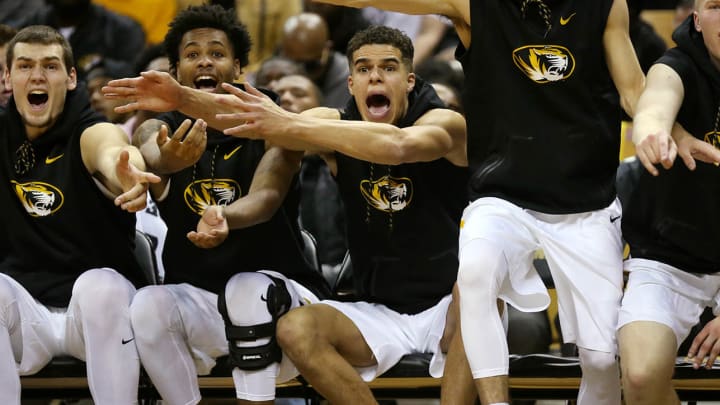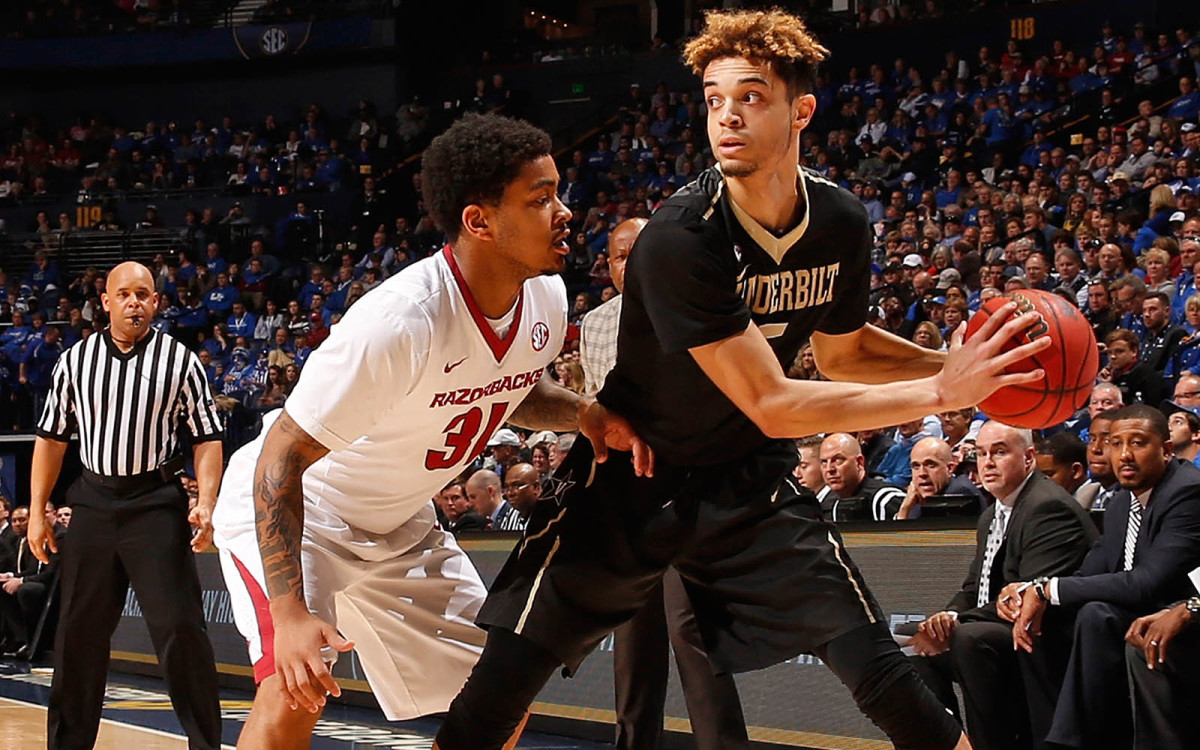NBA Draft Roundtable: Most Fascinating Prospect?

With the college basketball season underway and The Crossover’s Front Office up and running, seven writers weigh in on which potential NBA players currently have their attention. From top-five picks to potentially undrafted sleepers, here are our most fascinating prospects to watch.
Also, be sure to check out Jeremy Woo's 2018 NBA Mock Draft along with his Stock Watch from Tuesday night's Champions Classic.
Without further ado, the Front Office examines the most intriguing prospects in the 2018 NBA draft.
Jeremy Woo: Rui Hachimura, Gonzaga
The only thing better than a sneaky, obscure and fun prospect is a sneaky, obscure fun prospect with a cool backstory. Gonzaga’s Rui Hachimura has a great chance to become just the second Japanese-born NBA player ever (with Yuta Tabuse being the first). Hachimura played sparingly last season for the Zags, playing just 4.6 minutes per game on a Final Four team, and then…he went to the U19 World Cup and exploded.
Because he sat much of last season, most scouts haven’t seen enough of him for him to rank high on any boards. What we think we have here is a long, well-built combo forward who might be able to shoot it at the next level, make the occasional play off the dribble and work hard on the glass and defensive end. He can drop his shoulder and attack the basket off the dribble, and has the athleticism to get to the rim. It’s no longer an explicit negative to be positionless, and his evolving perimeter game and feel suggests he might eventually slot in nicely as a combo forward. The back of the first round is pretty wide–open, and as a part of a sneaky–fun Gonzaga team, Hachmura’s breakout could very well be imminent.
Ben Golliver: Michael Porter Jr., Missouri
There are longer wingspans, bigger mysteries, and perhaps even higher-upside prospects in the 2018 draft class, but potential No. 1 overall pick Michael Porter Jr. remains as intriguing as any of his peers. Porter checks all the boxes as a possible perennial All-Star who should acclimate quickly to the modern NBA game: The Missouri freshman can play either forward position, he can create his own shot with a smooth and natural handle, he can pull up comfortably and shoot from beyond the arc, he can collapse a defense without losing control, and he can finish above the rim thanks to his explosive quick leaping. Porter boasts solid feel for a teenager and a calculating attack mindset; It’s not hard to envision him leading a bad team in scoring as a high-usage/middling-efficiency rookie.
Porter doesn’t profile as a rim-protecting four or a play-making point forward, thereby docking his stock relative to past high-profile prospects like Kevin Durant or Ben Simmons. But Jayson Tatum’s early success in Boston should help stoke expectations for what Porter can accomplish out of the gate. Like Tatum, Porter appears to have the necessary mobility to defend wings and switch onto guards without succumbing to panicky feet and reaching fouls. What's more, in a league increasingly loaded with four-out and five-out lineups, Porter should thrive thanks to his athleticism, his developed one-on-one offensive repertoire, and his interchangeability on the defensive end. Questions about his “true position” miss a larger point: His offensive self-sufficiency and defensive flexibility make him an easy centerpiece for lineup-building. In sum, Porter is absolutely worth tanking for given his level of polish and his strong stylistic fit in today’s game. Good luck, Mark Cuban, Gar Forman, Vlade Divac and Travis Schlenk.
Dan Greene: Mitchell Robinson, ex-Western Kentucky
If you want to watch the most fascinating first-round pick in next year’s draft, you won’t find him in any college game, nor on any court in Europe. Instead you’ll probably have to head to Dallas and make arrangements with Mitchell Robinson yourself. The saga that precipitated these circumstances was winding. A somewhat succinct version: Robinson enrolled at Western Kentucky over the summer, then left campus a few weeks after his godfather, Shammond Williams, resigned from the staff; visited Kansas and New Orleans as potential transfer destinations; re-enrolled at WKU in August; and finally left WKU for good in September to begin his draft prep in Texas.
For college hoops fans, it was a dramatic road to nowhere. For NBA draftniks, however, the moves wound up creating a particularly intriguing and mysterious prospect. A consensus top-10 recruit, the 6’11” Robinson projected as an excellent rebounder and interior defender at the college level, where he would have gotten tons of run to showcase his game. Now he’s been reduced to a series of YouTube highlight compilations from the high school level. There are no meaningful stats to parse, nor a rich trove of game tape to scout. Robinson will enter the pre-draft process as unknown as he is talented.
Andrew Sharp: Mohamed Bamba, Texas
[youtube:https://www.youtube.com/watch?v=ahMJemil-lQ]
There are a number of reasons to be intrigued by Mo Bamba. First, the name. Mo Bamba. It rolls off the tongue, and it would be delightful to follow an NBA superstar named Mo Bamba. But mo' importantly—(sorry)—Bamba has the crazy kind of length that makes you wonder about the future of the sport. According to Draft Express, his wingspan measured out to 7'9" at 2017 Hoop Summit, with a standing reach of 9'6".
We've already seen Rudy Gobert become one of the best defenders in the league thanks to his freakish 7'8 1/2" wingspan, while Giannis has used his own 7'4" wingspan to render jumpshots an afterthought and insert himself into every MVP conversation for the next 10 years. And that's before you get to KristapsPorzingis (7'6" wingspan), Anthony Davis (7'5 1/2" wingspan), and Ben Simmons (7' wingspan) in Philly. Looking around the NBA, size and length—especially when paired with mobility—might be the most valuable skills for the next decade of pro basketball.
Bamba will need to refine his offense, he'll need to add weight, and he's probably needs a few more years to be able to bang with NBA big men, even in the small ball era. But he's big, he's fast, and he's got some of the longest arms we've seen since Giannis and Gobert. Are you not intrigued?
Chris Johnson: Bonzie Colson, Notre Dame
The odds of Colson hearing his name called in the first round are long. He’s nearly 22 years old and entering his fourth season at Notre Dame. The reason Colson is so intriguing as a prospect is simple: He plays much taller than his height. The Fighting Irish list Colson at 6’6"—but that might be a stretch. Most college big men are no match for him anyway.
One explanation for Colson's success is that he has a 6’11 1/2’’ wingspan, which helps him snare rebounds over opponents, swat shots and finish over length in traffic. A better one is that he has a next-level understanding about where he needs to be, and when, to make plays on both ends of the floor. High-difficulty flip shots are standard fare for Colson, and he can offset his lacking run-and-jump athleticism by outmaneuvering opposing big men in the paint. With a sturdy, 224-pound frame, Colson can absorb bumps and shoves without ceding ground, and he’ll make teams pay for putting him on the free-throw line (78.3 FT% last season). Colson’s already proven he can score efficiently inside the arc. To raise his stock before next summer’s draft, he’ll need to prove he can approximate the 43.3% three-point shooting he put up last season over a larger sample size.
Jake Fischer: Landry Shamet, Wichita State
A 6'4 point guard with length, shooting prowess and off-the-bounce playmaking ability? That sounds like a prospect that would have been grouped with the elite lead ball handlers of last year's loaded class, right? Shamet should assume an even larger role this season with the Shockers after a sterling NCAA tournament run last spring. Wichita State is a veteran bunch, fully primed for a run at the national title, and Shamet should exhibit an increase in scoring ability. He has tremendous patience in pick-and-rolls and can change pace effectively to score and set up his diving big man. Shamet drilled 43.9% of his triples a year ago, and he uses that threat to toy with defenses in addition to sniping for three points.
He has all the makings of a first–round pick, and could very feasibly rise into the late lottery a la Cameron Payne a few years ago (this is a thought exercise on draft trends, not a player comparison). Now two years removed from an ankle injury that forced him to redshirt his freshman campaign, Shamet will turn 21 during the season and is fresh off recuperating from a stress fracture in his right foot. He's healed now, playing in both of Wichita State's games so far, but scouts have certainly flagged him as a potential medical risk with two serious foot injuries on his résumé. Shamet's a tantalizing prospect otherwise. Can his play plus a deep run in March quiet those questions and his skeptics?
Eric Single: Matthew Fisher-Davis, SG, Vanderbilt

When most of America last saw Matthew Fisher-Davis, he was bent over in a shell-shocked daze after committing the biggest mental error of the 2017 NCAA tournament: intentionally fouling Northwestern's best player in the final seconds despite holding a one-point lead. And that foul wasn't the only black mark on Fisher-Davis's year; three separate disciplinary incidents during the season cost him playing time ranging from a spot in the starting lineup to an entire conference game. But amid all that, he led the Commodores in scoring at 13.9 points per game, taking 66 more threes than the next closest player in a lineup full of long-range gunners.
This year, he's expected to take on an even bigger load on another perimeter-oriented team—SI projects him to finish among Division I's top 100 scorers—but pro scouts will take note of the athleticism and base strength that allows him to launch his jump shots beyond tight contests and play above the rim when necessary. In addition, his awareness (get your Northwestern foul jokes in here) makes him an opportunistic defender, if not a relentless one. He's still a work in progress at creating his own shot, but he's farther along in that endeavor than 2012 first-round pick John Jenkins was entering his final season at Vandy. The Commodores figure to have little choice but to let him fire at will this season.
